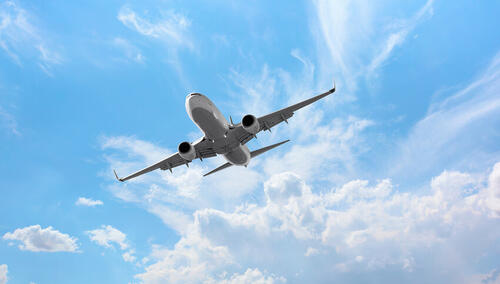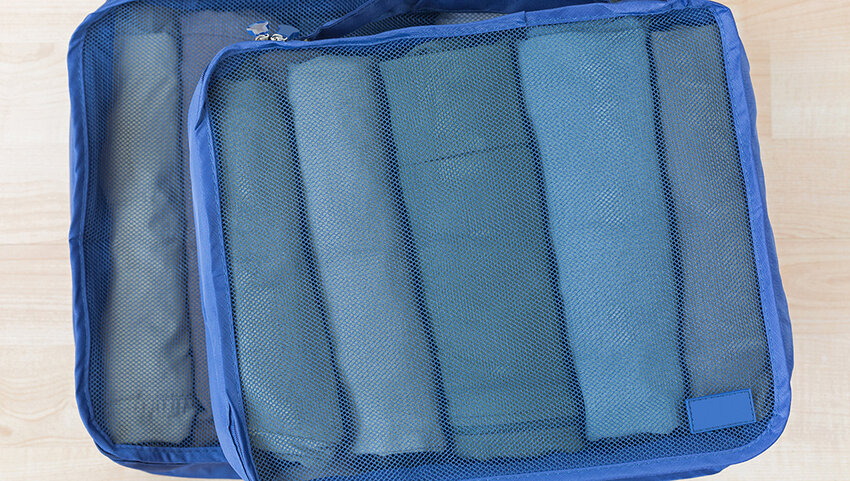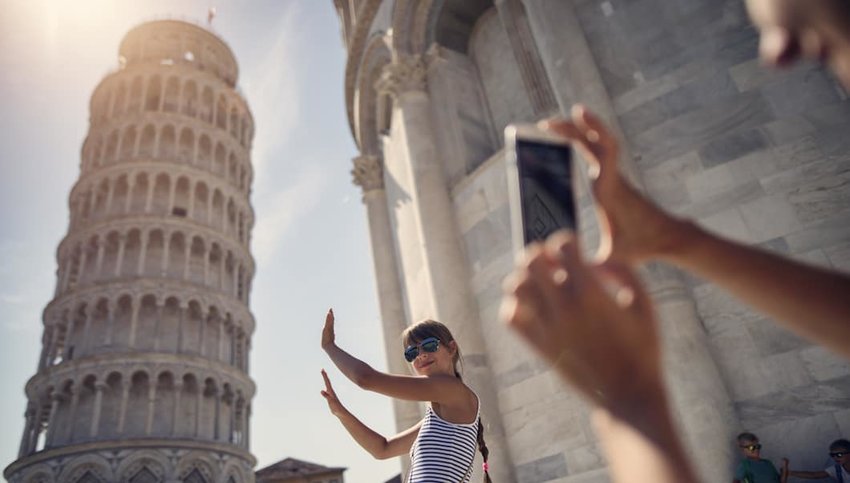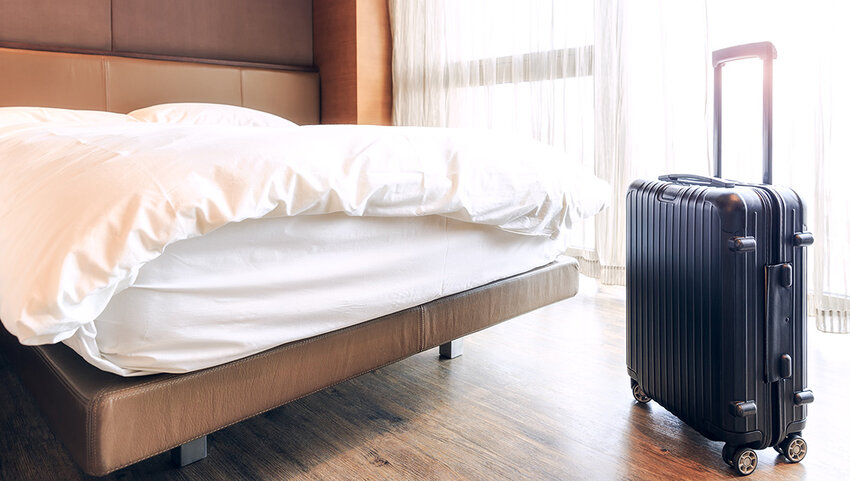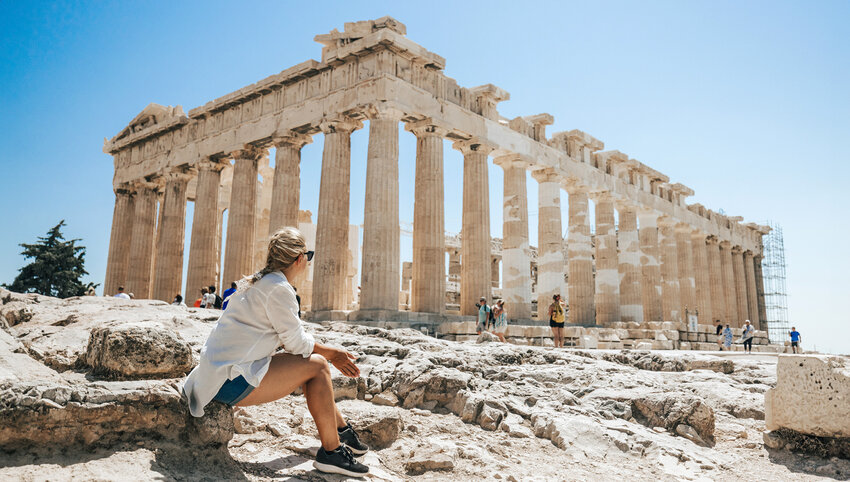How much do you really know about what happens during your flight? If you’re more focused on checking out the view from your window or thinking about what you’re going to do when you reach your destination, you’re not alone. Many of us fly often enough for the journey to be routine, mundane even. But if you’ve ever wondered why certain procedures and routines happen, here are ten things you never knew about your flight.
The Onboard Toilet Can Be Unlocked From the Outside by Cabin Crew
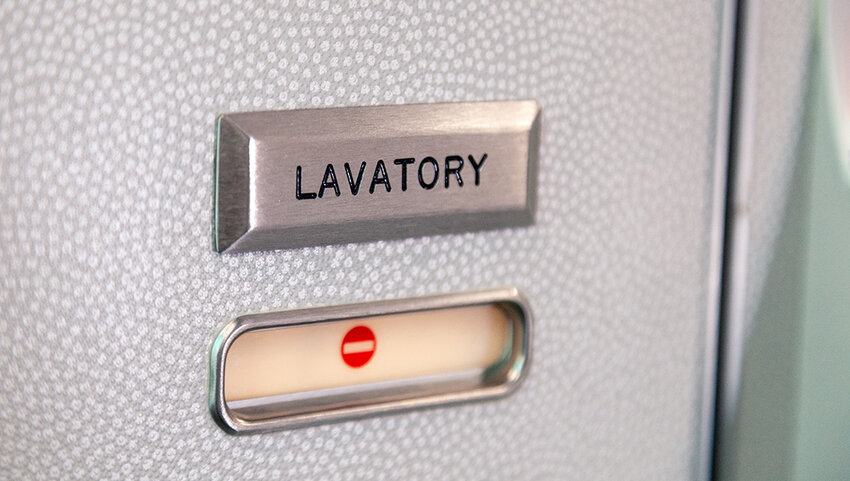
No one wants the embarrassment of being interrupted while using the bathroom, which is why they’re fitted with locks. But what happens in the event of an emergency? Perhaps a small child has managed to lock themselves inside, a passenger is unexpectedly taken ill and needs urgent medical attention, or the smoke alarm has been triggered.
In such cases, the cabin crew are authorized to use their judgment and unlock the door from the outside. There is a concealed catch on the outside of the door, sometimes hidden under the lavatory sign, which can be accessed if they deem it necessary. This is also how cabin crew lock the door for take-off, landing, and in the event of turbulence.
The Pilot in Command Has Extraordinary Powers While in Flight
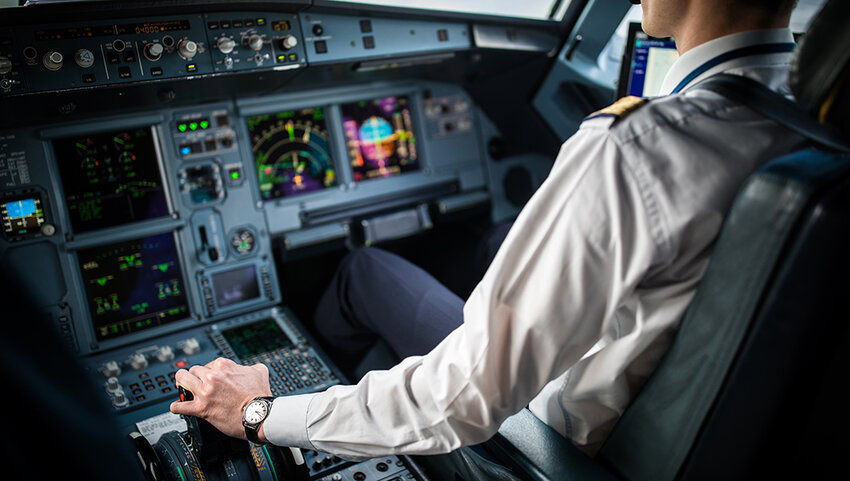
Alongside the very important job of flying the plane, the pilot has extraordinary powers while in flight. Assuming the formal role of Pilot in Command, they have the final say in matters affecting the operation of the aircraft. This includes everything from checking that the instruments are fully functional prior to takeoff to making decisions in-flight as to when seatbelts must be worn.
The captain has the authority to offload a passenger that is deemed to be a threat to the safety of others on board. If someone is excessively drunk, abusive or disruptive, for instance, the crew is trained in de-escalation techniques. The pilot-in-command might choose to restrain them as a last resort while they seek clearance from air traffic control to make an unscheduled landing. They can also request that police or other officials meet the flight once it’s on the ground.
In the Event of Engine Failure, Aircraft Are Designed To Glide
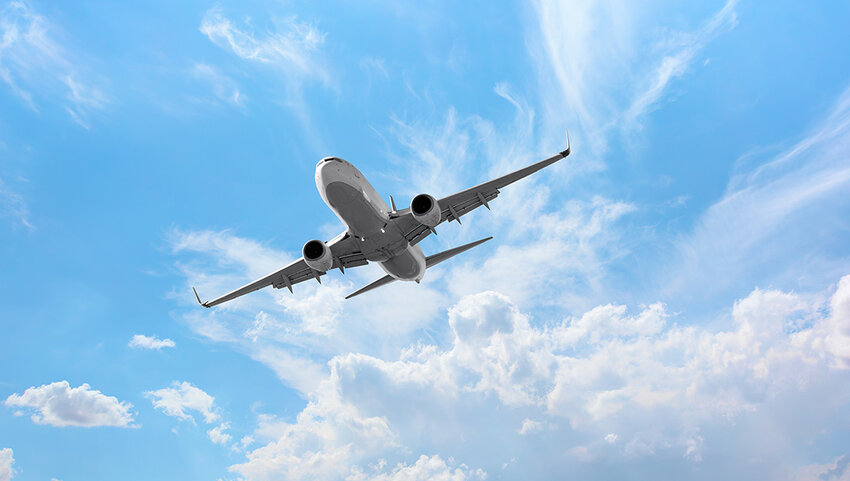
Planes of all sizes are designed to glide if the aircraft’s engines fail. The good news is that a forced landing such as this is highly unlikely, but still can be safe, as demonstrated by the actions of Captain Chesley "Sully" Sullenberger. Depending on factors such as the altitude, speed and wind conditions, a plane can probably glide for up to 100 miles.
Pilots are trained to find what’s known as best glide speed. This is the speed at which the aircraft glides the farthest with the least loss of altitude. Calculating the minimum sink speed is also crucial as this is how you keep the plane in the air for the most time. Both buy relevant parties time to figure out where the plane can be safely landed, which in Sully’s case was New York’s Hudson River, with no loss of life and few serious injuries.
The Hole In the Window Is There For a Reason
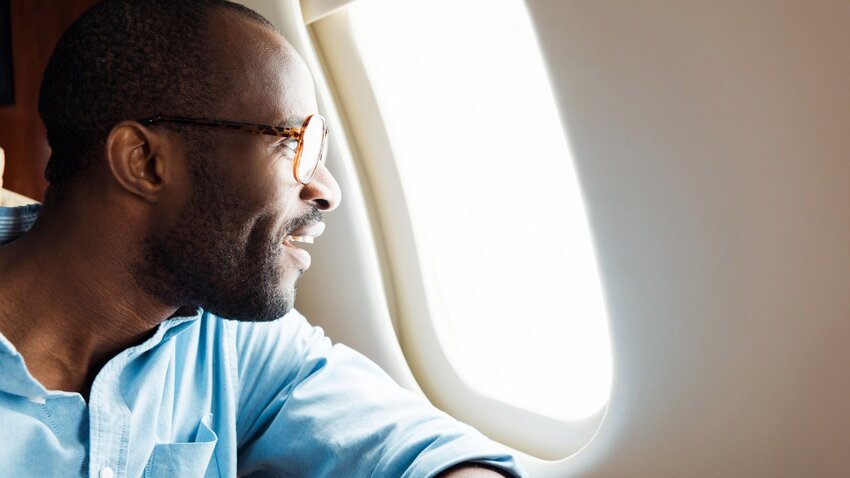
Next time you fly, take a closer look at the window and you’ll notice it has a small hole in it. Don’t worry – it's designed that way. It’s called the bleed hole and it’s there because the air pressure at high altitudes is much lower. Inside the airplane, the pressure is kept at a higher level for passenger safety and comfort.
If there was just a single pane, the stress on the window would be too much, so in fact, it consists of three layered pieces of acrylic, the middle of which has that hole. The bleed hole ensures the pressure can balance out within such a confined space. It also helps prevent the windows from misting up so you can see the view.
Dimming the Lights Is Important
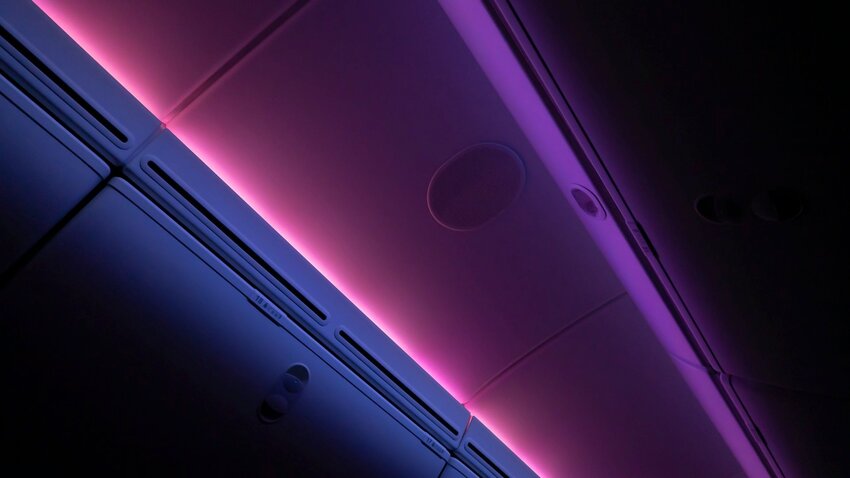
Dimming the lights for a night flight takeoff or landing is actually pretty important. By matching the dark cabin with conditions outside, passengers wouldn’t have to wait for their eyes to adjust in the event of an emergency evacuation. Keeping the window blinds up also helps cabin crew to keep tabs on what’s happening outside the plane should that become important.
Mood lighting is also increasingly popular. Old-fashioned fluorescent lighting wasn’t good for beating the effects of jetlag. However now, flight attendants can adjust LED lighting on newer planes such as the Airbus A350 and the Boeing 787 Dreamliner to mimic sunset and sunrise, helping our bodies to cope better with the changing time zones on long haul flights. Icelandair went one better with this Northern Lights display inside the cabin.
The Food’s Not As Bad As We Think
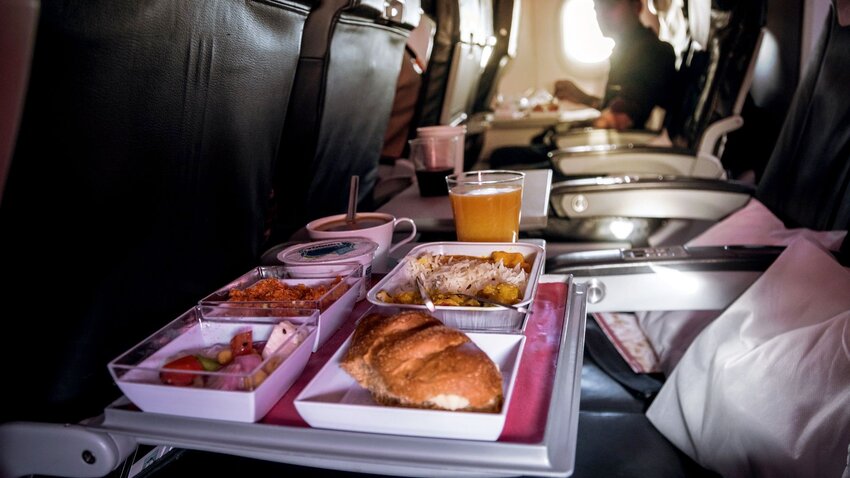
Airlines are up against it when it comes to serving us a palatable meal. The logistics of serving that many people in such a confined space mean that meals are pre-cooked and simply reheated when they’re needed. To stop food from drying out, it’s often smothered in sauce. But no matter how hard chefs try, they’re up against a whole heap of factors that impact our sense of taste, such as low pressure and dry air. One scientific study even found that the noise level on board influences how you perceive flavors.
Chefs that create airline meals have to significantly increase the amount of salt or sugar in the dish for it to compare to the exact same meal on the ground. Ingredients such as cinnamon, ginger, garlic, chili, and curry powder also help. The exceptions are foods rich in umami, the fifth basic taste. Unlike other tastes, our sense of umami is stronger at altitude, so next time you fly, order dishes containing umami-rich ingredients such as tomatoes, soy sauce, mushrooms, or sardines.
Where the Water Goes When You Flush
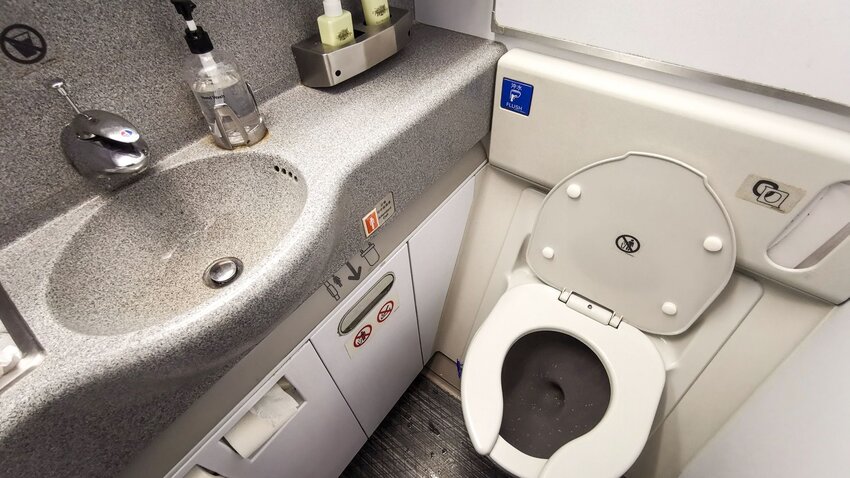
It’s a myth that airplane toilets empty into the atmosphere. In 2012, a Long Island couple who lived under the JFK flight path made headlines when they complained they had been splattered by what might have been human waste. The FAA duly investigated, but found no proof to substantiate the claim.
So how do airplane toilets work? After all, if regular WCs were fitted, there’d be water everywhere. Instead, airline manufacturers install vacuum toilets; the blue liquid you see in the pan is a sanitizer. When you press the flush button, a valve in the sewer line opens and the contents are sucked into a tank. When the plane lands, ground staff attach a truck line and empty the tank for disposal.
Why Do You Need to Fit Your Own Mask Before That of Others?
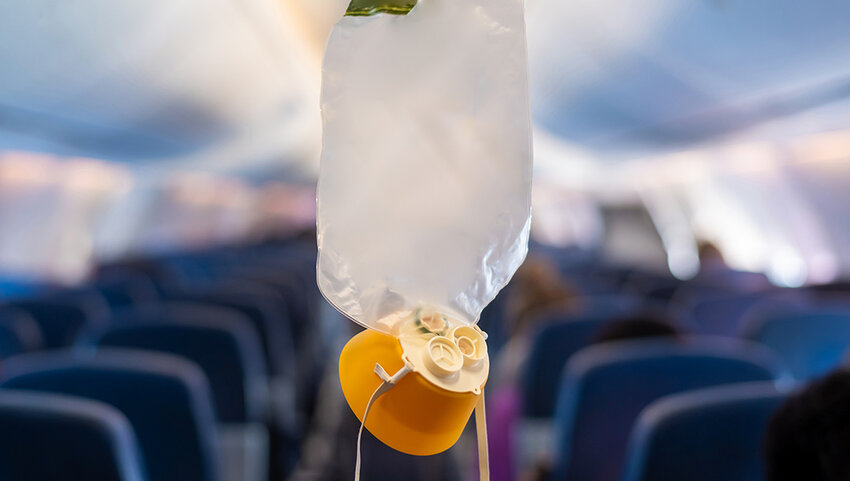
Few of us have ever experienced it, but in the event of a loss of cabin pressure, oxygen masks will deploy. The masks that drop are literally a life-saver. Without sufficient oxygen, people can start to feel light-headed and confused or even black out. The cabin of an aircraft is designed to prevent that from happening.
In the event of an emergency, you typically have about 30 seconds to fit an oxygen mask before you start to feel the effects of the thin air, so the instruction to fit your own mask first is to ensure you don’t become incapacitated. Federal law states that the oxygen supply must last a minimum of 10 minutes, which is enough time for the plane to descend to a safer altitude where the atmosphere contains more oxygen.
Why You Have to Put Your Phone In Airplane Mode
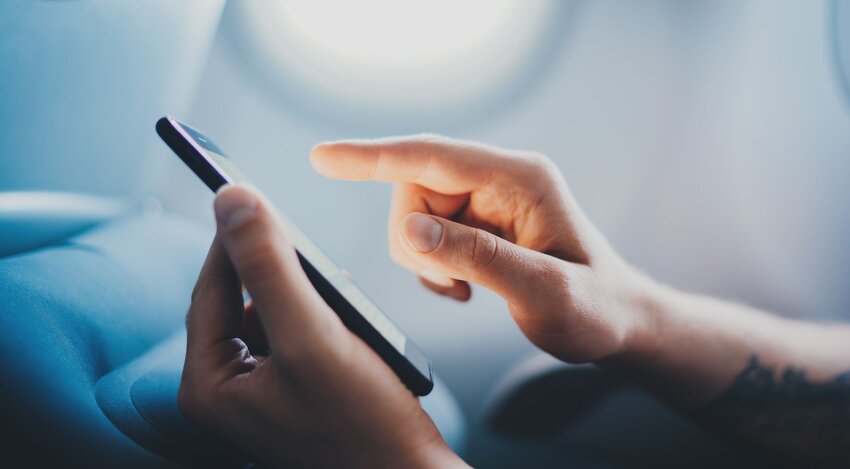
Good news if you’ve seen a fellow passenger sneakily using their cell phone after take-off, you’re not going to fall out of the sky. In fact, the requirement to switch to airplane mode has more to do with reducing interference and the associated distractions it may create on the flight deck rather than any significant physical risk to the plane. In short, your phone tries to communicate with cell towers; the more distant they are, the stronger the signal needs to be. Some say that isn’t ideal near a plane’s sensitive navigation equipment, and though the evidence is inconclusive, no one wants to be proven wrong.
Nevertheless, if the airline says so, you can enable Wi-Fi or Bluetooth connectivity while remaining in airplane mode. Since 2013, the FAA has permitted the use of personal electronic devices on board. So can you make a call or not? Well, that depends on who you’re flying with. The FCC (Federal Communications Commission) announced in December 2020 that it had no plans to overturn its ban on in-flight cell phone calls on US airlines. However, the European Aviation Safety Agency legalized the use of phones during flights in 2014 and some airlines, like Emirates, have allowed in-flight calls for even longer. Whether your fellow passengers want to listen to your chit chat, however, is an entirely different matter.
What Those Dings Mean
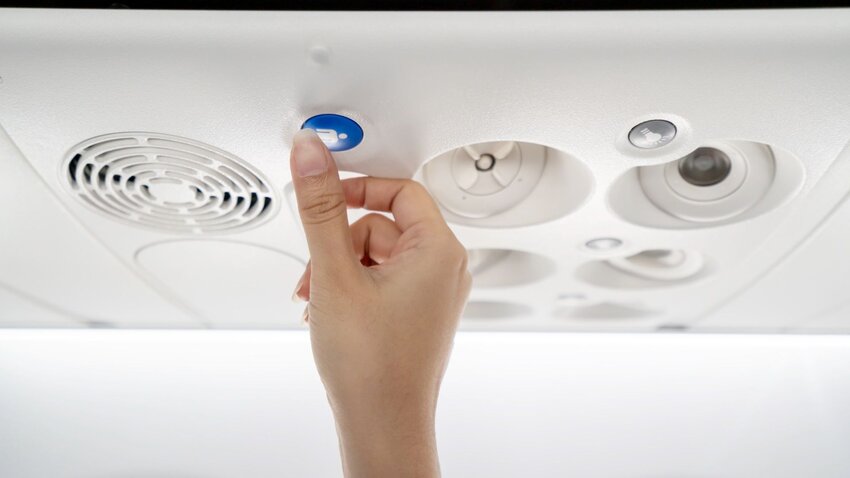
While the precise nature of the chimes you hear in-flight varies a little between airlines, they all do one important job: they help the crew communicate. Getting the same message to each member of the flight crew would be time-consuming if it was relayed from cabin to cabin. Speaking through the intercom could be intrusive, particularly on a night flight when passengers are trying to sleep.
Instead, airlines use chimes. The first one you’ll hear, not long after takeoff, is the noise that tells the crew the landing gear has been retracted. If you hear a single chime during the flight, it often signals a fellow passenger is pressing their call button. Multiple chimes can indicate that the pilot is telling the cabin crew that there’s turbulence up ahead so that they have time to stow their carts.

